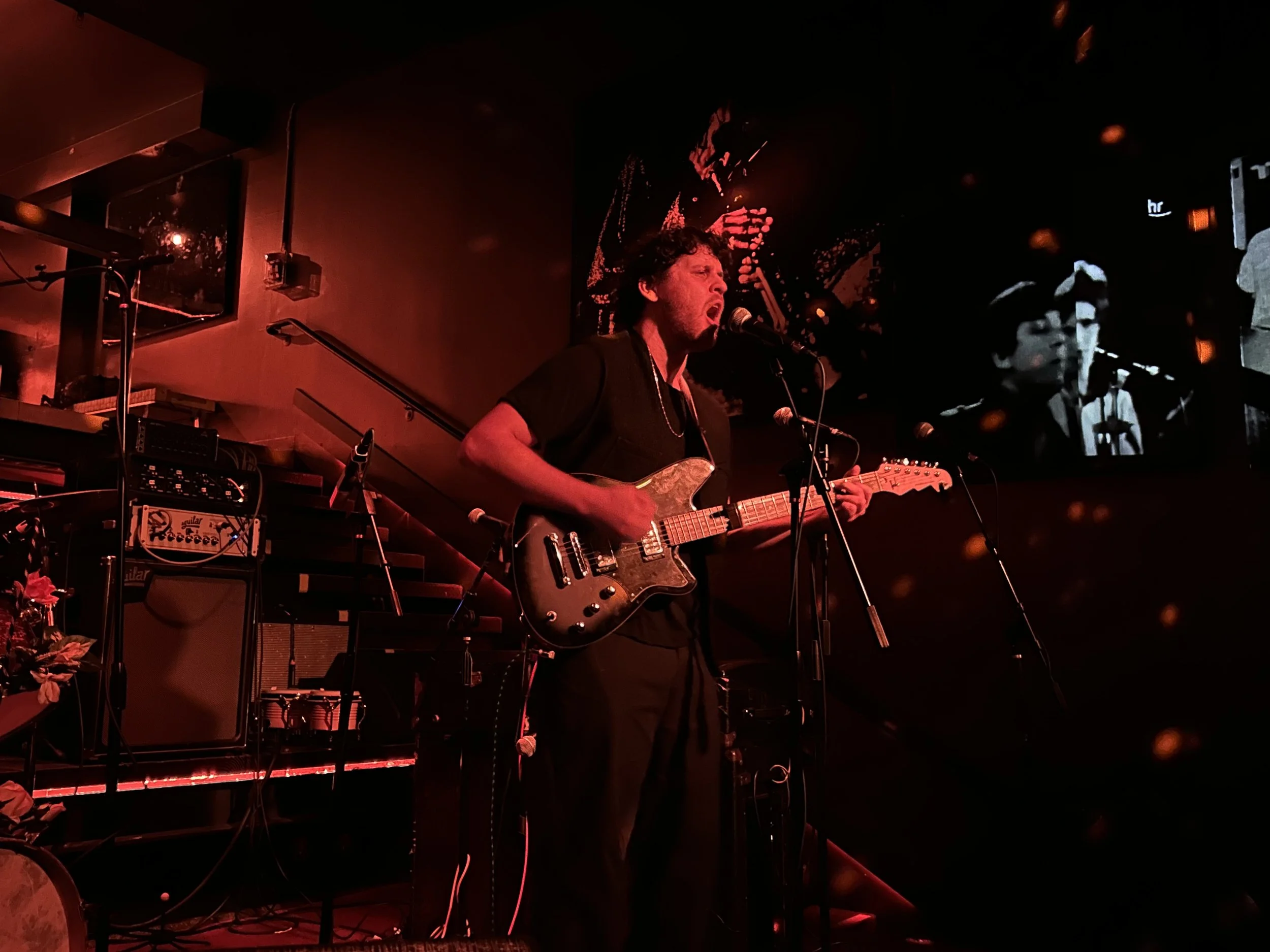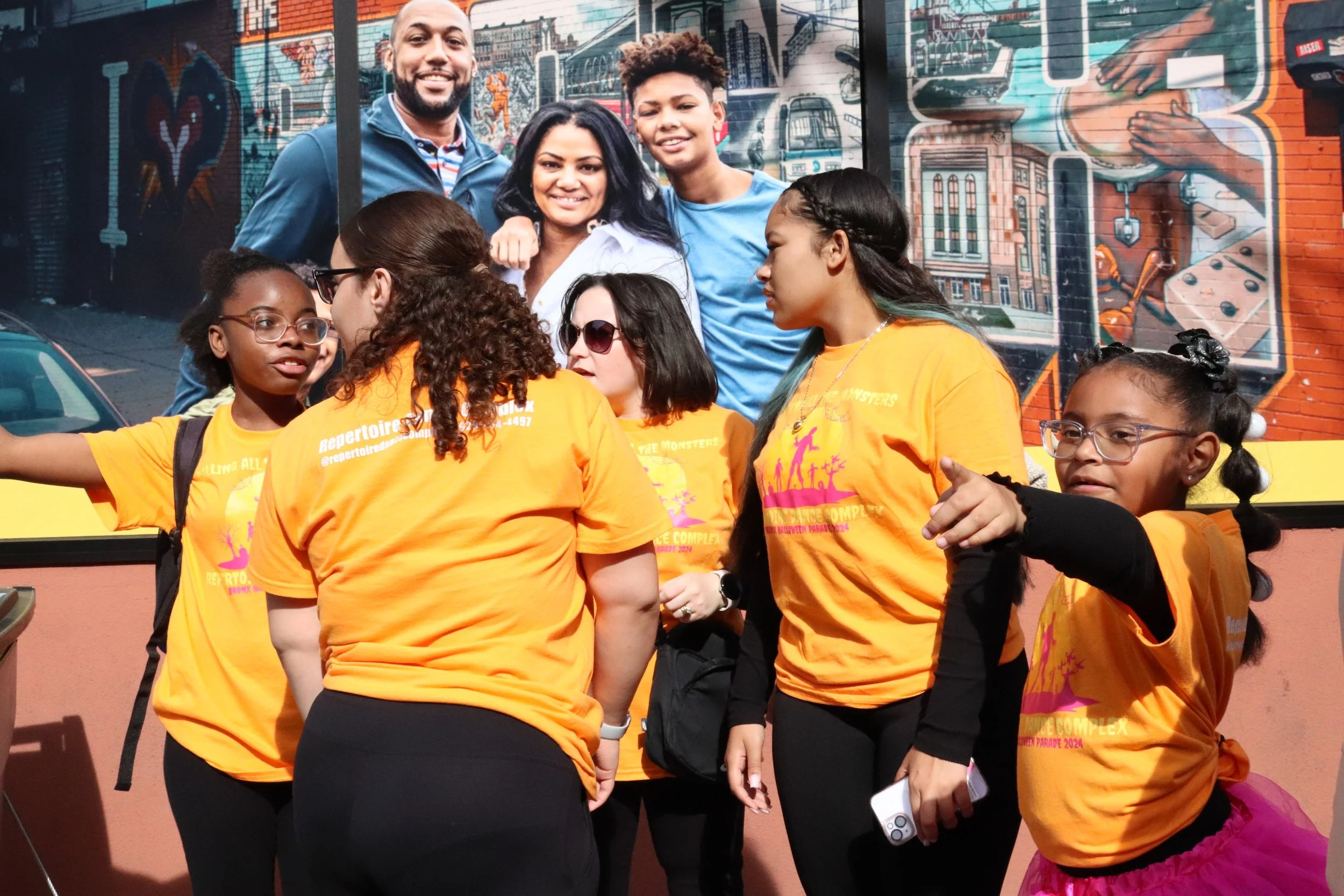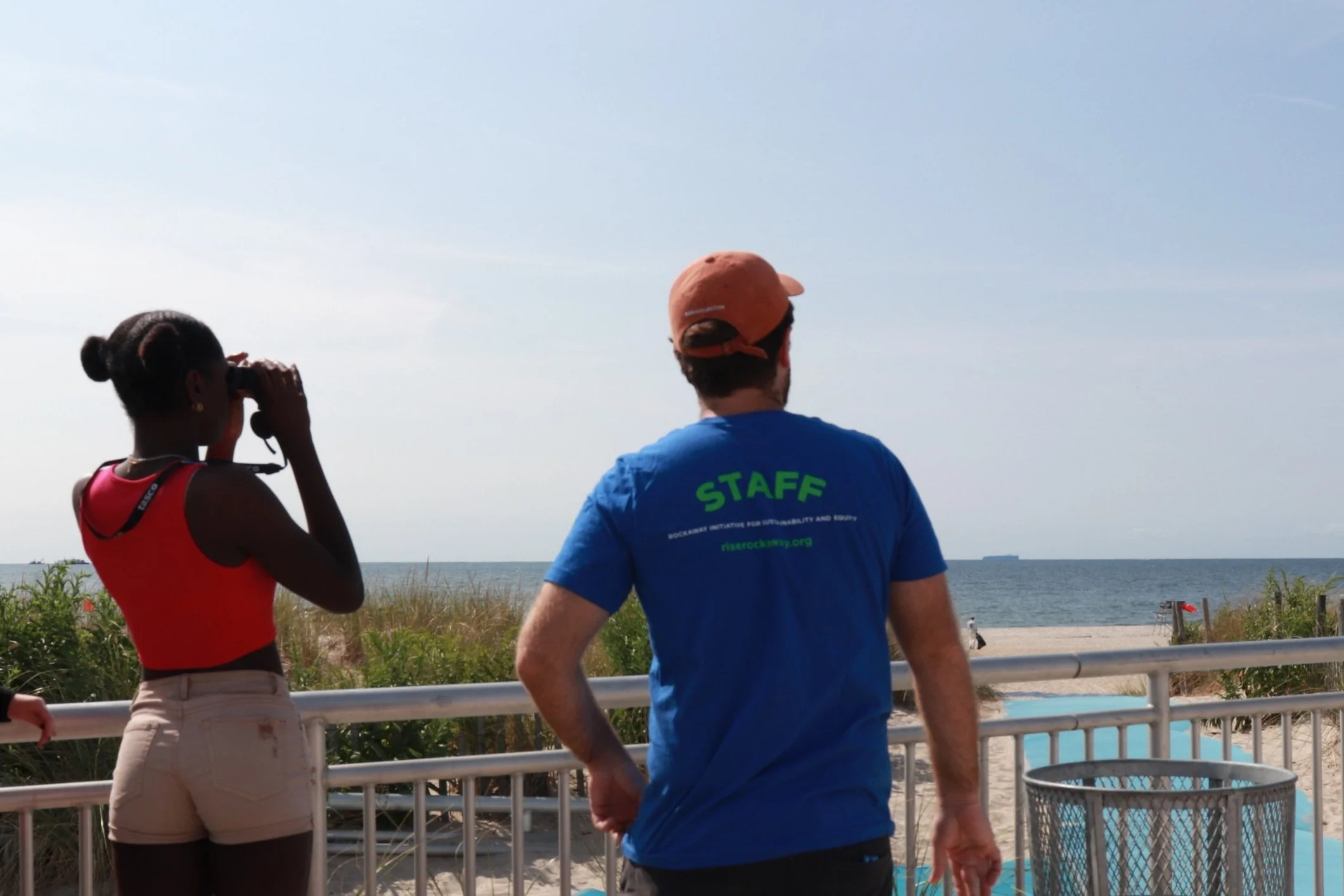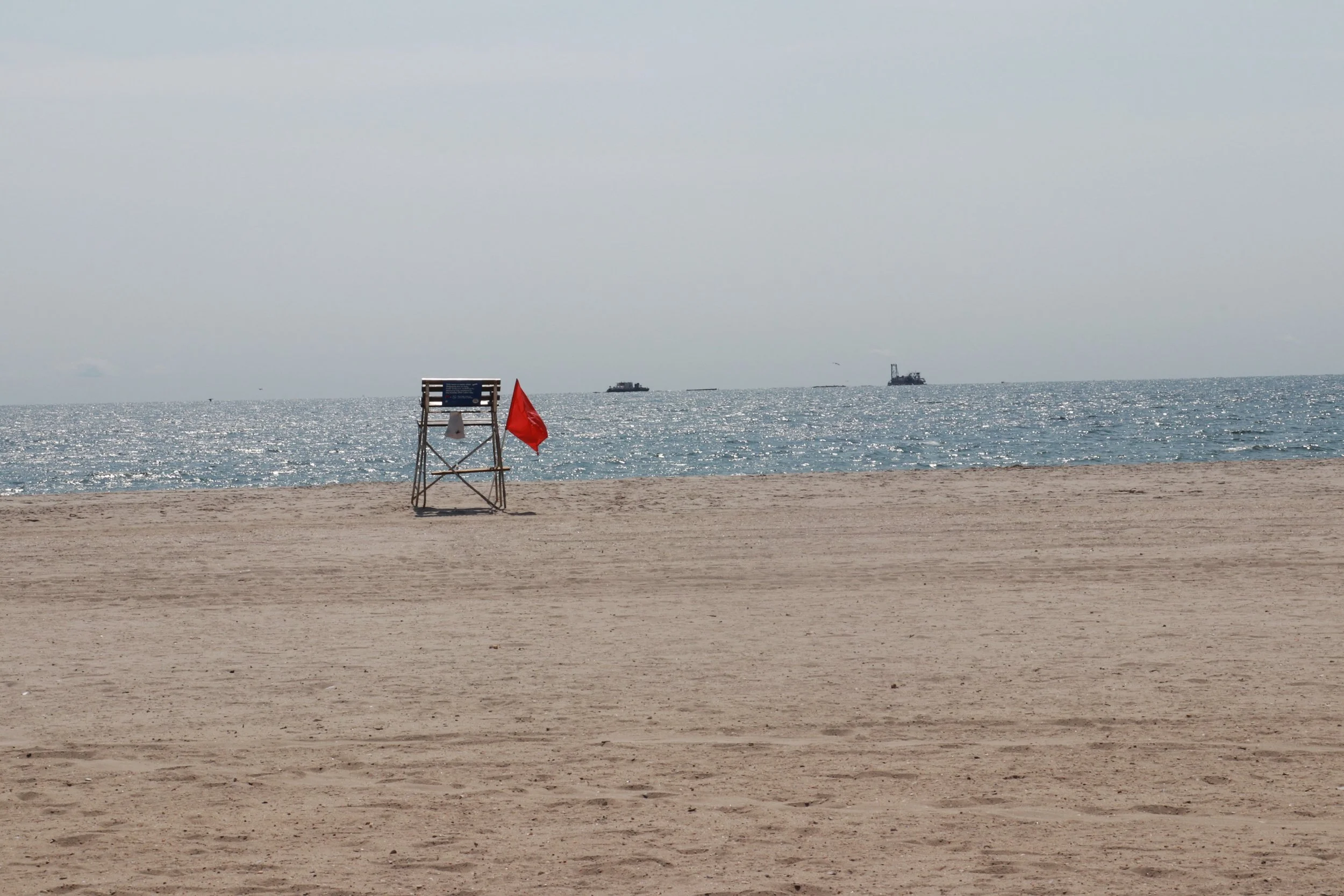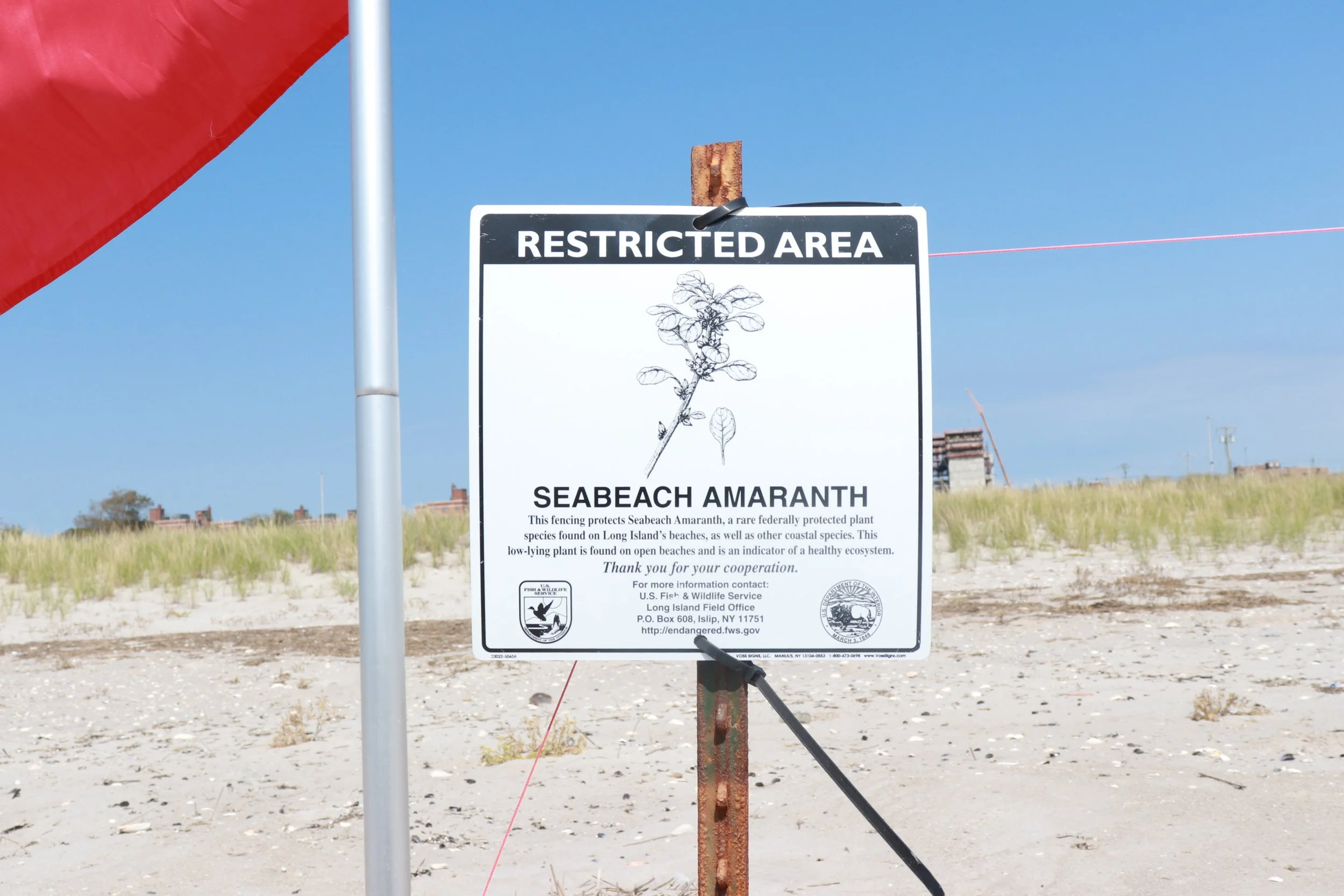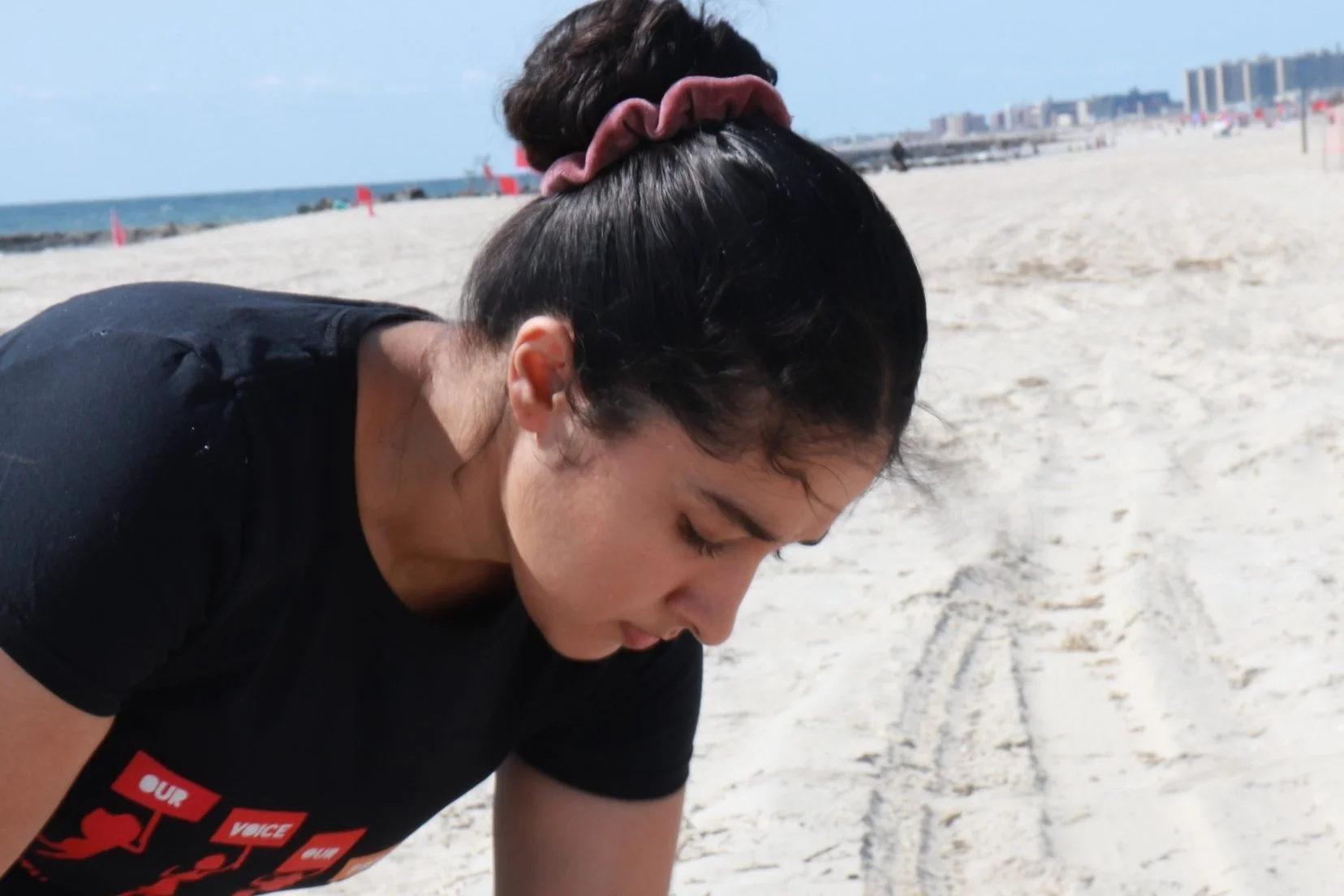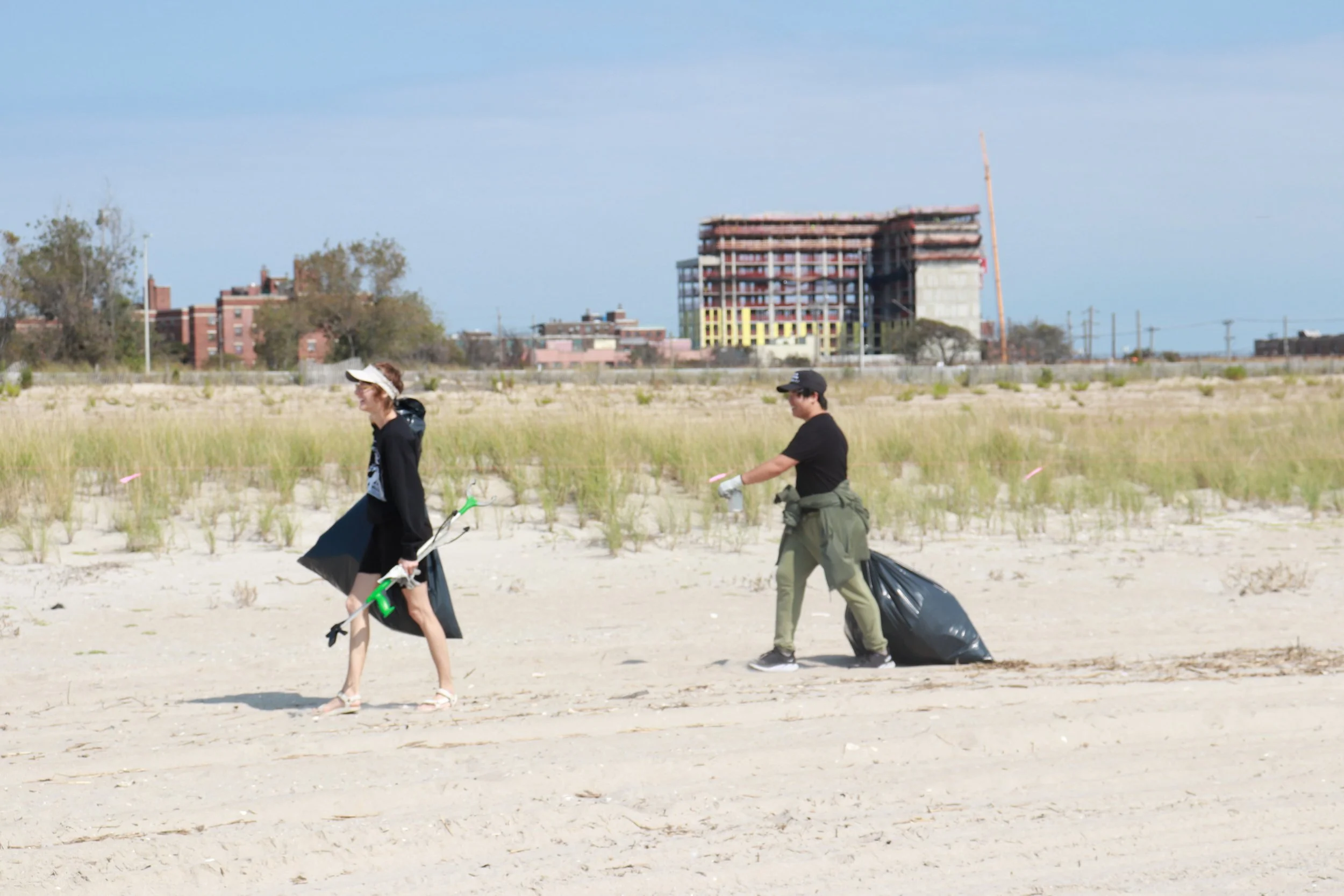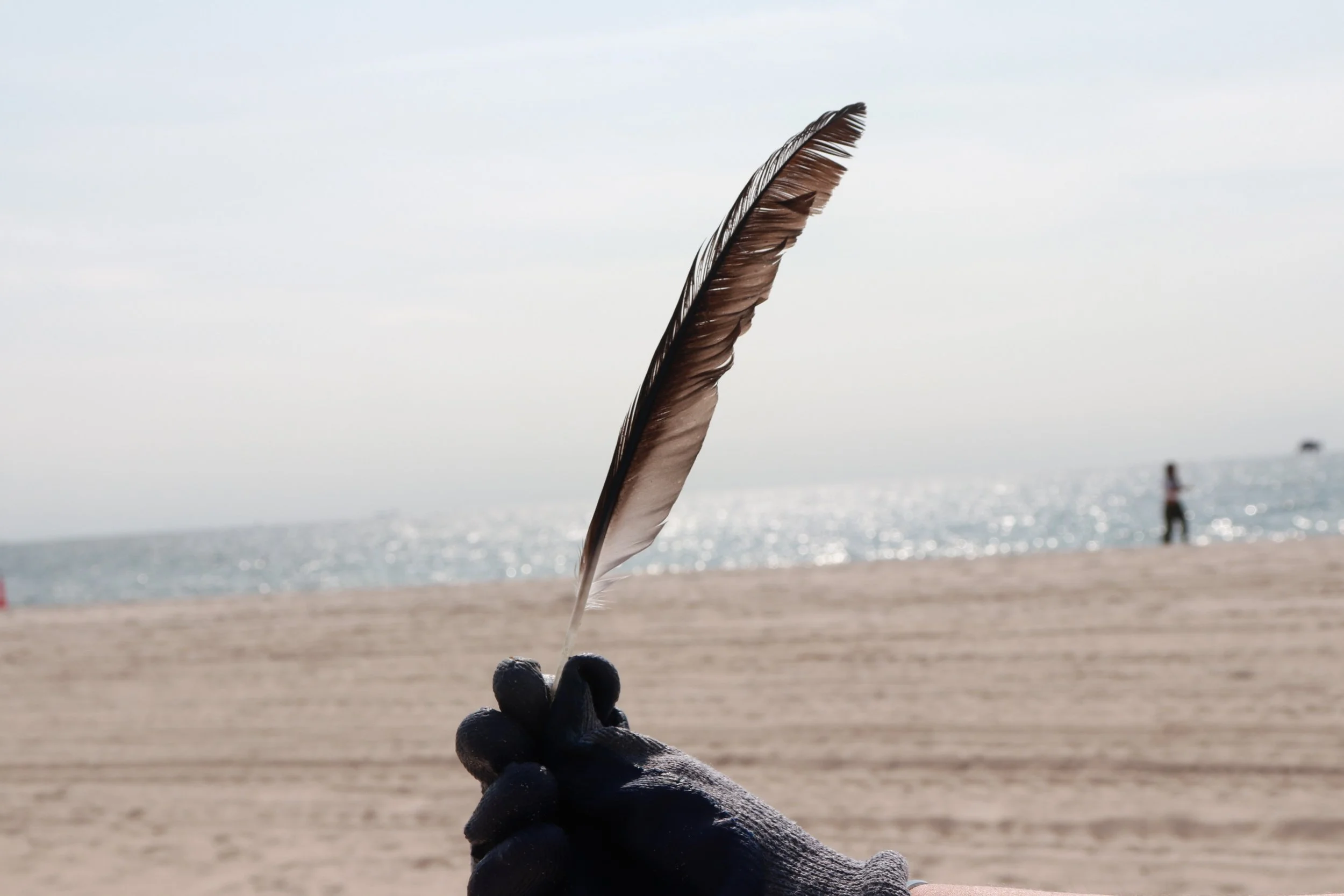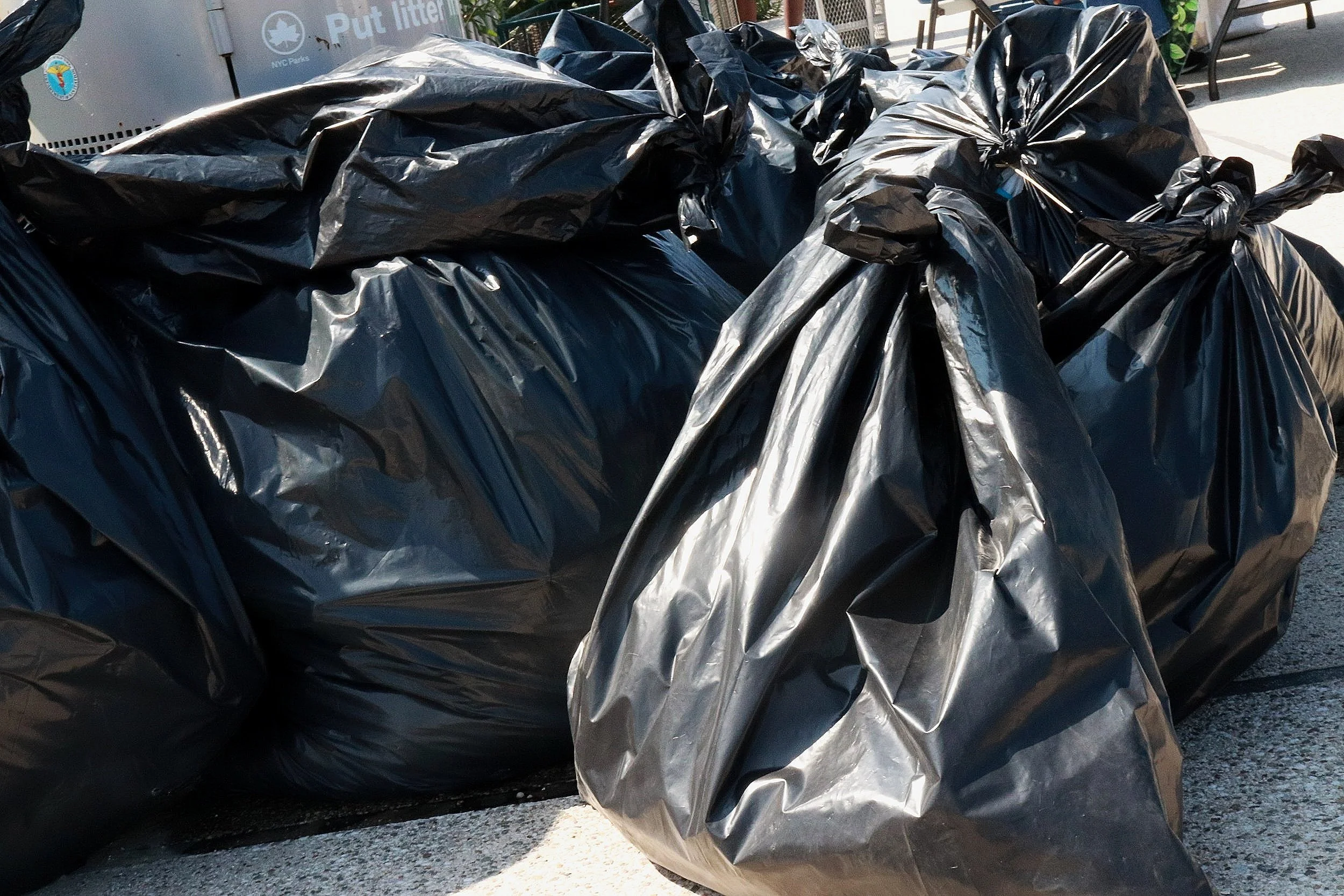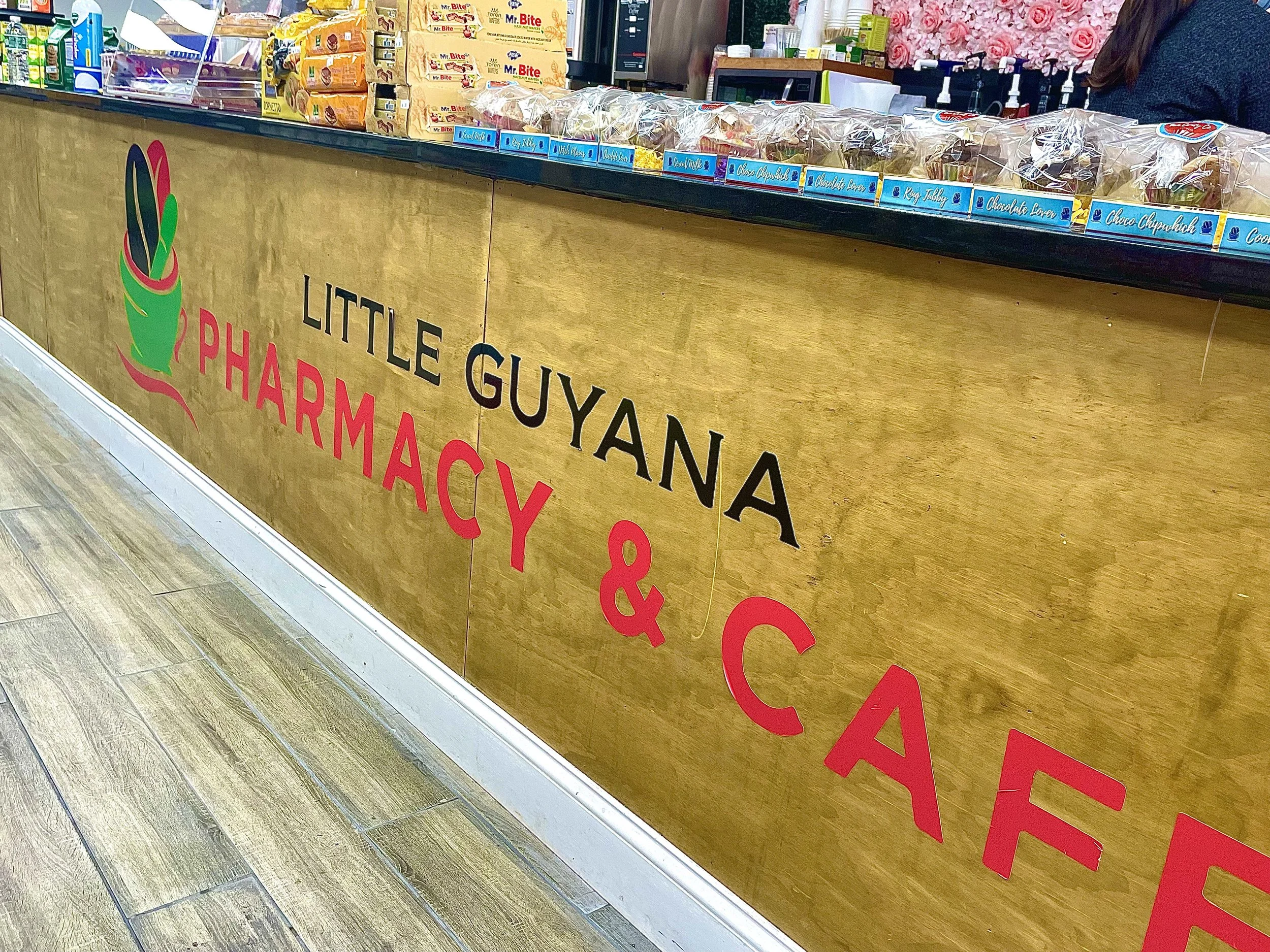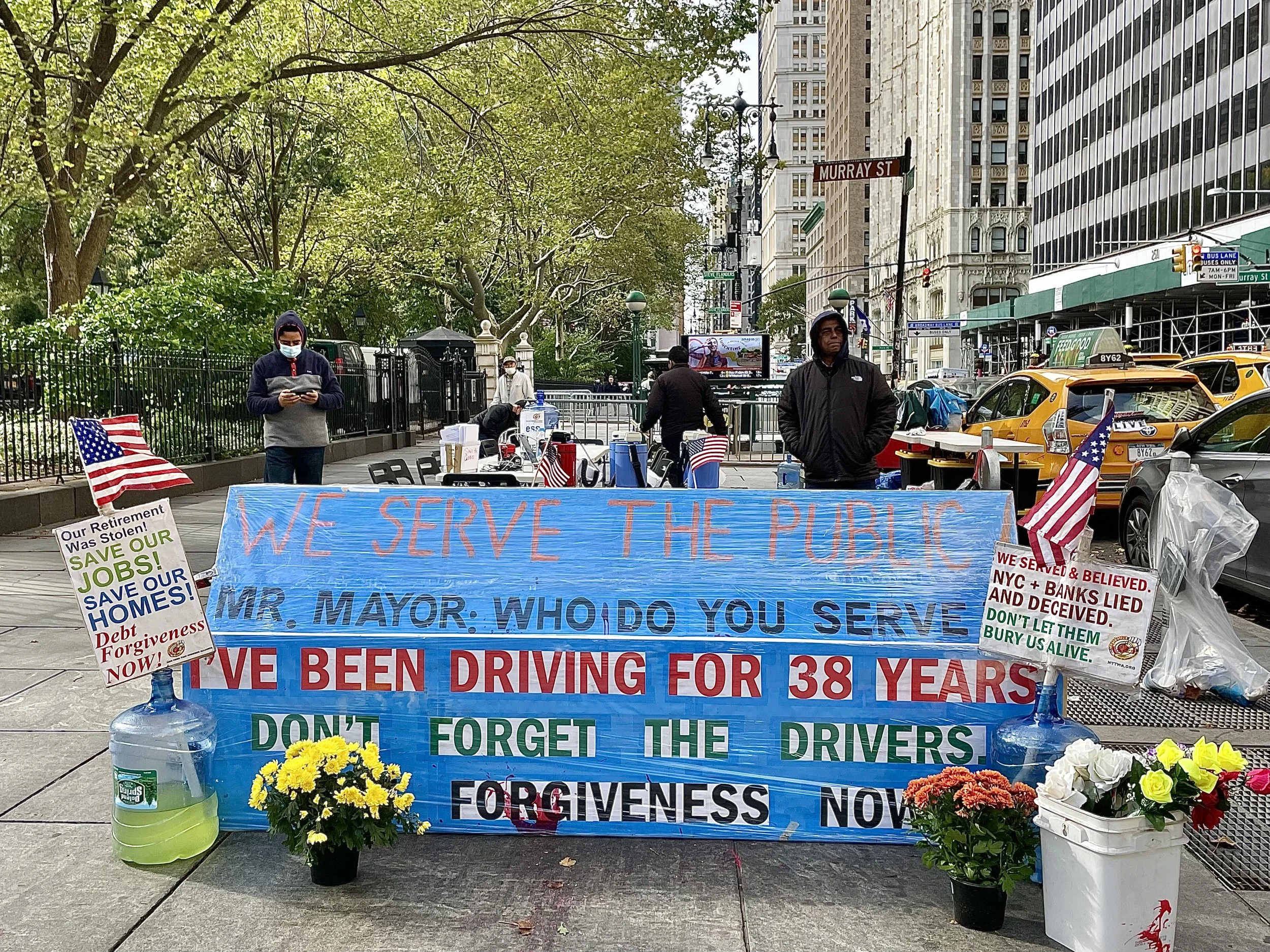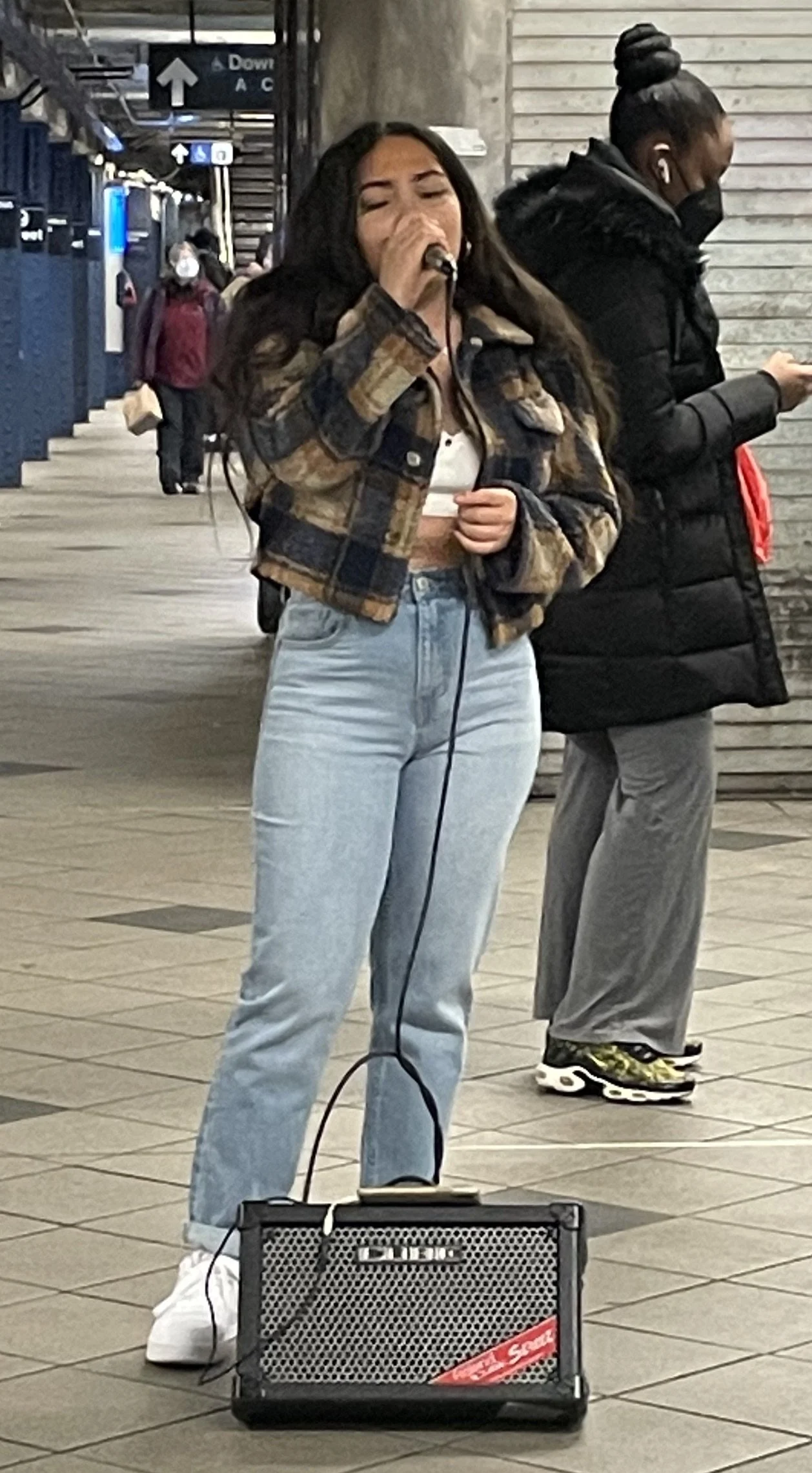Evan Crommett on musical style, culture, and best advice received
Evan Crommett sits down to discuss his artistic process, his background, and what has been inspiring him lately.
By: Usha Sookai
Bronx Dance Company Brings the BOO!gie
Repertoire Dance Complex gives back at the Bronx Halloween Parade.
By: Usha Sookai
The Fairest Chance - Full Documentary
Guyana is a country with rich history and culture - it's also a place where mental health is overlooked. This is a story about family, community, and hope, that shows that the Guyanese community is on the brink of changing that.
Directed, produced, written, shot, and edited by Usha Sookai for the NYU Honors Broadcast Journalism Program
Guyana is a country with rich history and culture - it's also a place where mental health is overlooked. This is a story about family, community, and hope, that shows that the Guyanese community is on the brink of changing that.
Directed, produced, written, shot, and edited by Usha Sookai for the NYU Honors Undergraduate Broadcast Journalism Program
Hear Today (WT) Trailer
Trailer for student documentary, Hear Today, coming May 2024
Shot, directed, edited, produced by Usha Sookai
Once Upon a Time at Drag Story Hour…
March 19 brought flocks of protesters to the LGBTQ Community Center in Manhattan – supporters of Drag Story House and those who wish it could go away with a wave of a wand. In this piece, LGBTQ folks who call NYC home tell their own story.
Nightlife without alcohol?
Nightlife and alcohol seem like words that just… go together, right? A community of sober and sober-curious New Yorkers are changing that.
Mary Charlotte Barnes In Her Element
Mary Charlotte Barnes, student at NYU, likes to wear clothes. I mean, she REALLY likes to wear clothes.
Upcoming Midterms?
How do young people feel about voting? Well, in this story we find out from several NYU students and hear a response from a representative of NYU Votes.
Home Improvement - A Photo Essay
Volunteers look out into the water at Beach 59th Street, Rockaway Beach. 9/17/22
The waters and the sand look pristine and calm on the surface. A lone lifeguard chair sits among shells. 9/17/22
A sign indicating a federally protected area of the beach–visitors are not allowed to disturb the wildlife. 9/17/22
A volunteer is focused on protecting the beach beneath her feet. 9/17/22
A rusted cart is attached to the amaranth fence, filled with sand and human garbage. Natural and unnatural meet. 9/17/22
Volunteers laugh and walk back to the tent site, bags already filled with garbage from the shore. 9/17/22
A volunteer holds a perfectly symmetrical feather in front of the water–the feather will become something new. 9/17/22
Within a few hours, volunteers collected several bags of garbage from Rockaway Beach. 9/17/22
Molly Given–In it for love
Molly Given opens up about her authentic, compassionate style of journalism.
At 28 years old, Molly Given carries herself with remarkable maturity, energy and humility. But having interviewed as many people as Molly has, it’s unsurprising that she’s picked up some wisdom along the way.
Mainstream media often portrays journalists as quiet or intrusive, sneaky or openly berating. But Molly, despite wearing a black turtleneck and speaking with a slight southern accent, is none of those things. She is present, personable, and passionate.
Becoming a journalist was largely an accident, but Molly’s love for writing began during childhood. Whether she was writing in childhood notebooks, studying media, or moving to Los Angeles to pursue screenwriting, passion pushed her pursuits.
“I always knew I wanted to write, it was just in what capacity,” she says.
The west coast provided valuable opportunities, but she knew it wasn’t the right place for her.
“I was very small fish in a very big pond,” she says. “There, everyone it seems is trying to make it in that industry.”
Philadelphia was a new world of opportunity. After writing horoscopes, then copy writing for a theater company, she became a features writer at Metro US. But that position became much more.
She humbly describes her start in entertainment reporting as “luck” that followed company layoffs.
“Some people in New York just started reaching out to me, I just said ‘yes’ and it went from there,” she says.
When the pandemic took root in the United States about two years later, she maintained her hard-earned connections with publicists and industry professionals with the same word: “yes.” Her work ethic didn’t falter, and she amplified even more positive messages.
“I’m always trying to be a herald of someone who’s positive. I was like that before,” she says. But when the pandemic brought people added grief, the trend in stories began to shift. Molly’s had even more outlets for her passion.
“This is the first time in a long time that we’ve all gone through something,” she says, her voice full of emotion. “There was a sense of loss for everyone, some bigger than others, but that, again, has I think driven everyone to want to connect to, I think, have more empathy for people.”
Molly puts her hand over her heart as she says the last phrase.
While her compassion is noteworthy, her self-awareness of what makes her stand out is even more so. She’s transparent and generous about her personal success strategies, letting the interview double as an advice session for other young journalists.
Smiling over Zoom, she says the key to avoiding being one of the many is to “find something that makes you stand out, that you’re passionate about.” “Eventually people catch on to that passion.”
It’s clear how she achieved so much, so soon – the combination of her unabashed passion, kindness, and confidence make the perfect recipe for a journalist. She seems able to talk for hours about her experiences, held back by the instinct to keep responses concise.
She manages to describe her “most eye-opening day” in just two minutes.
It involved a visit to the Penn Museum to write a piece about their Global Guide program, where locals from around the world were invited to give tours in exhibits about their homes. She expected to ask general questions about their experiences as tour guides. But the guides were so excited to share details about their homes that she spent the whole day with them.
“I wanted to get everything they said in there,” she says. The finished article was 2000 words long.
“It was just something that, again, opened my eyes to a lot and I kind of gained, not just people I talked to for a story, but friends, even,” she said.
In the true spirit of friendship, each of them still reach out to her, whether that’s to wish her a Merry Christmas or to like her social media posts.
But, even if Molly hadn’t connected with the tour guides as she did that day, the conversation and article likely would’ve been similar because she always focuses on the positives in her work, refusing to critique.
“I always try to find people’s passions, because I think we’re all passionate about something,” she says. She believes that everyone can agree on passion and creativity.
After the interview, her next destination is Philidelphia’s Franklin Institute. The museum sent her a cryptic invitation to a press conference regarding an upcoming Harry Potter exhibit. She doesn’t know much, but she was intrigued.
Despite a busy day packed with that event, article-writing and conducting interviews of her own, she still made time to speak with a class of undergraduate journalism students.
That alone tells you everything that you need to know about Molly Given, the unconventional journalist.
Little Guyana Cafe and Pharmacy is not as odd as it seems
Alex Singh, CEO and founder of Little Guyana Cafe & Pharmacy, shares his purpose.
With doors to the Little Guyana Cafe and Pharmacy set to open in two weeks, founder and CEO Alex Singh is brewing a batch of his signature coffee and getting the pieces in place.
Shelves are stocked with convenience items, everything from instant coffee to shampoo. Piles of to-be wooden shelves line the floor, and a rolling door separates the future cafe from the pharmacy. One wall is covered in plastic flowers, and the other is painted with a “Little Guyana” mural representing the South Queens neighborhood.
From the outside, Little Guyana Cafe and Pharmacy seems oddly placed; there’s a Wallgreens next door and a McDonald’s across the street. The “cafe and pharmacy” combination only adds confusion.
To Singh, it realizes an idea that emerged when he was in pharmacy school, falling in love with coffee.
“Usually, when you go in a pharmacy there are extremely long wait lines and no one’s really happy. I did this to ideally incentivize and cheer people up,” he says.
He paints a picture of what Little Guyana Cafe and Pharmacy can be after recounting his childhood visits to the nearby McDonald’s after seeing the doctor.
“Imagine a kid coming into the pharmacy, sick, not feeling well. But on his way out, he can get a scoop of ice cream or a hot chocolate,” he says, smiling.
The business has a standout concept and is the first independently-owned cafe in the area. He’s confident, despite all of the neighboring competition.
“We know we can offer every single thing that they offer, but they can’t offer what we offer,” he says. “Our goal and our mission is to really service the community, service the people.”
As a South Queens native who worked at local pharmacies, Singh knows better than most how the neighborhood pharmacy services operate.
In Little Guyana, as named by the NYC government for its prominent Guyanese, West Indian, and Indian population, everyone knows their local business owner, but nobody knows their pharmacist, he says. Likewise, the pharmacist doesn’t know them or how to help them.
Miseducation, late working hours, and isolation from family members create other barriers to quality care within the community.
“None of the pharmacies know the patient, get to know the patient, or even understand how to talk to the patient,” Singh says.
When he realized he was caught in that cycle of giving impersonal, efficiency-based care, he asked himself, “what good does that do if the patient isn’t able to properly take the medication?”
“I could give them a bag and they could walk out of here, but there’s no benefit if they don’t understand the use and the outcomes,” he says.
Two years ago, Singh quit his pharmacy job to pursue a new dream: build a space that would fill those gaps between community care and individual needs.
Little Guyana Cafe and Pharmacy is the result–where parents can stop by the pharmacy after work, ask questions about medication, and leave with a cup of coffee that they bought as they waited. Singh is particularly proud that the pharmacy will be open until 11 pm, later than most pharmacies in the area.
He keeps locals in mind in every aspect of the brand, from the name to the convenience products he sells.
“We opened this to give back to the Indian and West Indian people who made this community what it is now,” he says.
He’s prepared to be personable and go out of the way for customers, saying he wants to sell great coffee to find solutions for prescriptions not covered by insurance.
It sounds relatively simple. That is until Singh had to face consecutive concept changes and the mysteries of electrical plumbing and permits. But that was a small price to pay for a fulfilling career and an opportunity to educate community members.
“What we do want to do is change the stigma and tighten, or narrow, the gap, so people can understand the importance of vaccinations,” Singh says.
In the local community, there’s shame associated with mental health as well. He believes the experienced staff can help combat that.
“Some of the pharmacists that we have working here have backgrounds in hospital settings, where they speak to patients and council patients,” he says. “They’re able to get into the grind of it to understand.”
Mostly, Singh wants to revitalize pharmacy. In the early 1900s, he says, pharmacies were fitted with soda fountains and snack counters. But when the industry became monetized, those were phased out.
He envisions that Little Guyana Cafe and Pharmacy will be “a completely new pharmacy with old-fashioned vibes and service.” Later, he wants to bring the same concept to other neighborhoods.
“We want it to be a place where you can come in, order coffee, and if you have questions or problems, you can speak to a pharmacist in the back.”
When Singh speaks about the combined cafe and pharmacy, it doesn’t seem weird at all. Even the most critical skeptics ease their cocked eyebrows and titled heads.
It’s his version of a pharmaceutical revolution, and it starts in South Queens.
NYC taxi workers fighting for survival, low hopes for next mayor
In Fall 2021, NYC taxi workers went on a hunger strike.
The intersection of Broadway and Murray has a new rhythm: pots, pans, bullhorn sirens and chants of “We want justice! Talk to the Union!”
Taxi medallion owners have held a now 45-day, 24/7 presence near City Hall, demanding that NYC Mayor Bill deBlasio provide taxi workers increased debt relief. Fourteen days ago, demonstrators launched a hunger strike. On this Election Day, they are still fighting.
Despite hopes that the mayor takes action before the next administration begins, the new mayor will help determine the fate of these taxi workers, who, on average, face $550,000 in debt due to how the city government handled medallion auctions, investors’ unregulated loans, and Uber and Lyft in NYC.
Eric Adams, who’s expected to win the mayoral race, gave what medallion owners see as inadequate answers to questions about their plights during the first and second debates.
At the first, hosted by NBC 4 New York, he suggested that the city “allow them to go on the same platform as the Uber drivers.” However, strikers like Elliot Colbert, a representative from the Democratic Socialist Alliance, says drivers already tried that. They still had extreme debt and low wages.
A week later, at the second debate, Adams said, “We need to look at those everyday men and women who are the smaller owners of those medallions.”
But the drivers’ union, the New York Taxi Worker Alliance already has a proposal, and workers say words are not enough, especially because Mayor deBlasio made similar promises. Yet, he didn’t propose his solution, which includes monthly debt payment assistance and $20,000 to restructure loans until the end of his term.
Now, Augustine Tang, a taxi driver and union member, doesn’t feel supported by either candidate.
“We believe that these people just speak with banks and lenders and money. They see this workforce who gave so much for this city, they don’t really think of us as anything else–just immigrants and just workers,” he says.
Tang is also concerned about Adams’ ties to corporations.
Suresh Chand, a taxi driver since 1995, worries that the next administration will not take action because they inherited the problem.
Drivers say the taxi medallion crisis was created by the city. The city government sold highly inflated medallions to many recent immigrants as their ticket to the middle class, using slogans like “Drive Your Future” in various auction advertisements. When the medallion bubble burst, immigrant families had already signed faulty loans that they didn’t understand the terms of.
In 2014, when Uber and Lyft entered the market, taxi drivers lost customers, medallion values plummeted and cabbies were left hopelessly in debt. A bad situation became worse, and nine men committed suicide over their stress.
The crisis unfolded under Mayor deBlasio’s watch, but the progress will extend beyond his term. Kuber Sancho-Persad, who inherited a taxi medallion in 2017 from his late father, said the next steps would be improved income, healthcare, and guaranteed retirement for drivers, so they don’t have to rely on medallion values.
“The [NYTWA] proposal is just a step one of reforming our industry,” he says.
Reform would require immediate and lasting solutions, as the financial ruin from the medallion crisis has decimated families, with many facing home foreclosure, bankruptcy and immense stress from working 16-hour days. Some, like Basia Osowski, are over 65 and have no retirement to rely on. They won’t accept anything less than the NYTWA proposal, which would reduce monthly loan payments to $800 and have the city spend $92 million over 30 years. Over 75 officials, including Comptroller Scott Stringer, have approved the bill.
But when asked about the taxi medallion crisis at the final mayoral debate, Adams didn’t mention the union or the proposal. Instead, he said, “I’m going to be there for them, and we are going to find a solution to this problem.” Later, the campaign was unable to take a request for comment.
Without concrete action, Chand says the workers can’t survive.
“Talking is cheap, and we know that. We have been through this long enough,” says Tang. “If they’re really honestly trying to fix this crisis, then they will adopt New York Taxi Workers Alliance’s plan.”
The Serious, not-so Underground World of Pandemic-Era Busking
The pandemic changed a key part of NYC culture – busking
A busker must walk with confidence and humility. They must carry their talent to their destination and back, whether it resides in their voice, amp, or instrument case. They must expect no money, but sometimes, they gain more than they hoped for.
During the last two years, almost every industry saw major shifts, whether in their business model, interactions, or the goods and services they provide. Street performance, a field of its own, was not spared. A study published in July showed that after the WHO pandemic announcement, buskers gained heftier tips and more donations from online transactions. A lack of live music and a wariness of cash changed the busking scene.
In the strange, eerie quiet of a locked-down New York City, buskers adapted to their new ways of work and coped just like everyone else.
Bumbly performs at the Columbus Circle subway station in NYC
Although street performers may seem like mysterious underground musicians who may not have another option, their work is intentional. Over time, they’ve developed a sense of where to stay (places with foot traffic), when to stay (several hours), who to make eye contact with (follow the instincts), and when it’s time to move (when police say you’re blocking traffic).
They also must become brand managers when the show is over, as recent cultural studies show.
“Artists now have to be cultural entrepreneurs–what we now call ‘artrepreneurs,’” said Meg Elkins, the main author of the July study. “It’s not just talent that allows you to succeed, it also has to be backed up with some level of business now.”
Busking must be more than a person with an instrument. Her study concluded that “the number of fans an artist has matters for both receiving a donation and the amount the artists they receive,” implying that success depends on a fanbase. The only way to maintain a fanbase is to “self-market” oneself.
Yet, busking can be a surprisingly stable source of income. It’s no coincidence that skyrocketing unemployment rates and 24% growth in the gig economy happened in the same year. In May 2020, the U.S. Bureau of Labor Statistics even reported that the average hourly wage for musicians in “independent performance industries” was $35.27.
Although the BLS doesn’t have a category for “buskers” in their data, the “independent performance” category includes buskers like Bumbly.
Bumbly has been busking since 2015. When the pandemic began, her mental health declined and performances became scarce as a result. Pandemic assistance kept her afloat.
“I was able to rely on unemployment, and then I would still busk here and there, but it wasn’t consistent,” she said over Zoom.
Assessing the risk and benefits of venturing out to busk during the pandemic was difficult for these performers. The ability to bring in joy and extra income was lost and met with safety concerns.
“The subway was empty for a long time. From March 2020 until about November I stopped busking because it felt reckless to be out there,” said Heather Cole, a violinist who usually busks near Grand Central Station. She began busking when she spontaneously joined a banjo player who happened to have a spare violin.
But the pandemic was brutal.
Busk.co, a platform that connects buskers around the world to resources, one other, and fans, asked their community, “How have you been surviving?” The responses were mixed, ranging from confessions of depression to realizations of new passions.
To assist performers, the site launched “buskpay” in 2020, which allowed buskers to seamlessly earn cashless tips. The founders did not respond to a request for comment.
By tracking donations made through Busk.co, the platform found that default tip values, custom URLs, QR codes, and donation options can help buskers increase the number of donations and the worth of each.
With the pandemic bringing wariness over hand-to-hand and cash-to-hand contact, the tool helped cater to a community that once relied on cash alone. It also united a group that Elkins said, exists on the “cultural fringes”–denied grants and other resources. Yet, they’re at the root of thousands of commutes.
Against all the odds, buskers persisted and succeeded throughout 2020. Bumbly, for example, earned $400 for the first time after the pandemic.
Cole was shocked by the warm welcome when she returned to the scene. “Initially, the subway was primarily medical workers and construction workers and they were extremely generous,” she said.
Both artists felt that people were just grateful to have live music again.
“They’re like, ‘wow, I don’t hear something this beautiful everyday,’” said Bumbly, who thinks the music also inspires listeners, encouraging them to tip.
By Elkins’ definition, Bumbly unlocked the key to successful busking: making connections, building relationships through sound.
As cool and “bohemian” as that may be, the drawbacks and risks are apparent. Bumbly and Cole both recount experiences of sickness, assault, and harassment.
“There are fights, there are smells,” Cole said. “I’ve had a rash of maturbators.”
Recently, an officer saw her being harassed, left, then returned to check in on her afterward. “There was a sweetness to it,” she said, sounding almost tired of the laxness.
“I’ve been physically assaulted on the train,” said Bumbly. “I don’t let it affect my day because I’m here to make money, I’m not here to be crying over somebody’s stupidness.”
She’s blunt. It’s a dangerous profession, even with the perks.
“Most of the time it’s fantastic, but I do feel like there’s a risk inherent in it. It’s not worth it if its not financially rewarding.The subway is not a fairytale,” said Cole.
For Bumbly, the experience is a little different.
“When I’m singing, everything disappears,” she said. “It’s just about the song, and I’m so grateful that I have this.”
Busking is a job and a love for Cole, Bumbly and thousands like them. The reward can be a hefty Venmo tip, but it could also be a smile.
Bumbly admitted that if she isn’t singing on the trains, she’s singing at home. Might as well busk, right?
How farmer’s markets and EBT work together to fight food insecurity
Farmer’s markets aren’t just for hipsters.
A sign outside of the Astor Place Greenmarket
Farmer’s markets and farmstands in NYC help mitigate the effects of food insecurity and food deserts by providing low-income New Yorkers access to fresh, quality foods and accepting Electronic Benefit Transfer payments.
EBT’s help qualifying people in the U.S. purchase nutritious food that they may be unable to afford otherwise. Vendors say that more customers have been using EBT payments at NYC’s farmer’s markets than in previous years. Similarly, 201,968 more New Yorkers received EBT’s in 2020 than in 2019, according to the Citizen’s Committee for Children of New York.
“We’ve seen an increase in EBT usage over different markets,” said Dennis Remsburger from Remsburger Honey & Maple. “This year I’ve had more EBT than years’ past,” he said.
Another vendor, Dan, from ShannonBrook Farms, said, “We have noticed regular customers start using EBT. There is a shift in what payments are processed.”
The sales shift could be attributed to NYC markets’ Health Bucks program, where for every $2 paid through EBT, customers receive a $2 coupon. In low-income neighborhoods, farmstands that implement these policies help remedy food insecurity.
One such farmstand resides in Cypress Hills, Brooklyn. Located in the first-ranked Community District in NYC for EBT distribution, it serves a large community in need.
The farmstand is also partnered with the Cypress Hills Local Development Corporation, which connects residents to resources they may be unfamiliar with.
“There is a targeting in this particular neighborhood. I just know from walking and driving around here, there’s not really a natural food store presence or even a great grocery store presence,” said Miguel de Laveaga, a GrowNYC member managing the farmstand.
GrowNYC, an NYC-based non-profit organization focused on promoting health and sustainability in the city, sponsors these farmer’s markets and farm stands with their Greenmarket program.
“One of the best parts about the Greenmarket is that we’re really trying to produce food access and I think because of the pandemic there has been a huge increase in people needing assistance for food,” said Lilly Gibson, another staff member for the organization.
Accepting EBT makes this goal attainable and simultaneously benefits farmers.
“Any sale is going to help a business, and you don’t pay a fee on the EBT,” said Remsburger. “Any income that the farm gets is going to be beneficial.”
However, Dan revealed that while farmers don’t profit directly from EBT sales, they are helpful.
“Whatever you turn in gets taken off your rent for the month. So, the more that comes in, the less you pay in rent. It’s an offset cost.”
De Laveaga sees an opportunity for all parties when EBT is used to purchase fresh food at markets. “We’re here six months out of the year, so it’s not a void filled all the time. But to have it be sustainable enough to have this stand here half the year, and that we can sustain ourselves and vice versa, I definitely sense that as a great thing happening here,” he said.
